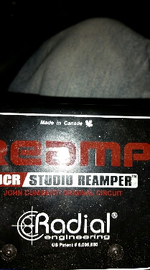R
RAMI
Guest
Thanx guys. I think I got it all sorted. Doesn't look like I need to buy anything more, as far as this whole re-amping this is concerned. Just blasted a few tracks and they sound great, and I still have the DI tracks in case I change my mind one day.
I just couldn't get my head around that impedance video. It's not the dude's fault, even though he admittedly flubbed a few things. I just was never able to "get" that stuff, even as a kid. I'm very intelligent (I know how that sounds, but I am), and I can usually learn just about anything, but I just go "special ed" when it comes to electronics. I guess my brain just isn't wired to get that stuff, no pun intended. I've tried. I remember having a book about building a ham radio when I was a kid, and I just couldn't for the life of me understand it, no matter how many hundred times I read it. Just not my thing.
I just couldn't get my head around that impedance video. It's not the dude's fault, even though he admittedly flubbed a few things. I just was never able to "get" that stuff, even as a kid. I'm very intelligent (I know how that sounds, but I am), and I can usually learn just about anything, but I just go "special ed" when it comes to electronics. I guess my brain just isn't wired to get that stuff, no pun intended. I've tried. I remember having a book about building a ham radio when I was a kid, and I just couldn't for the life of me understand it, no matter how many hundred times I read it. Just not my thing.







